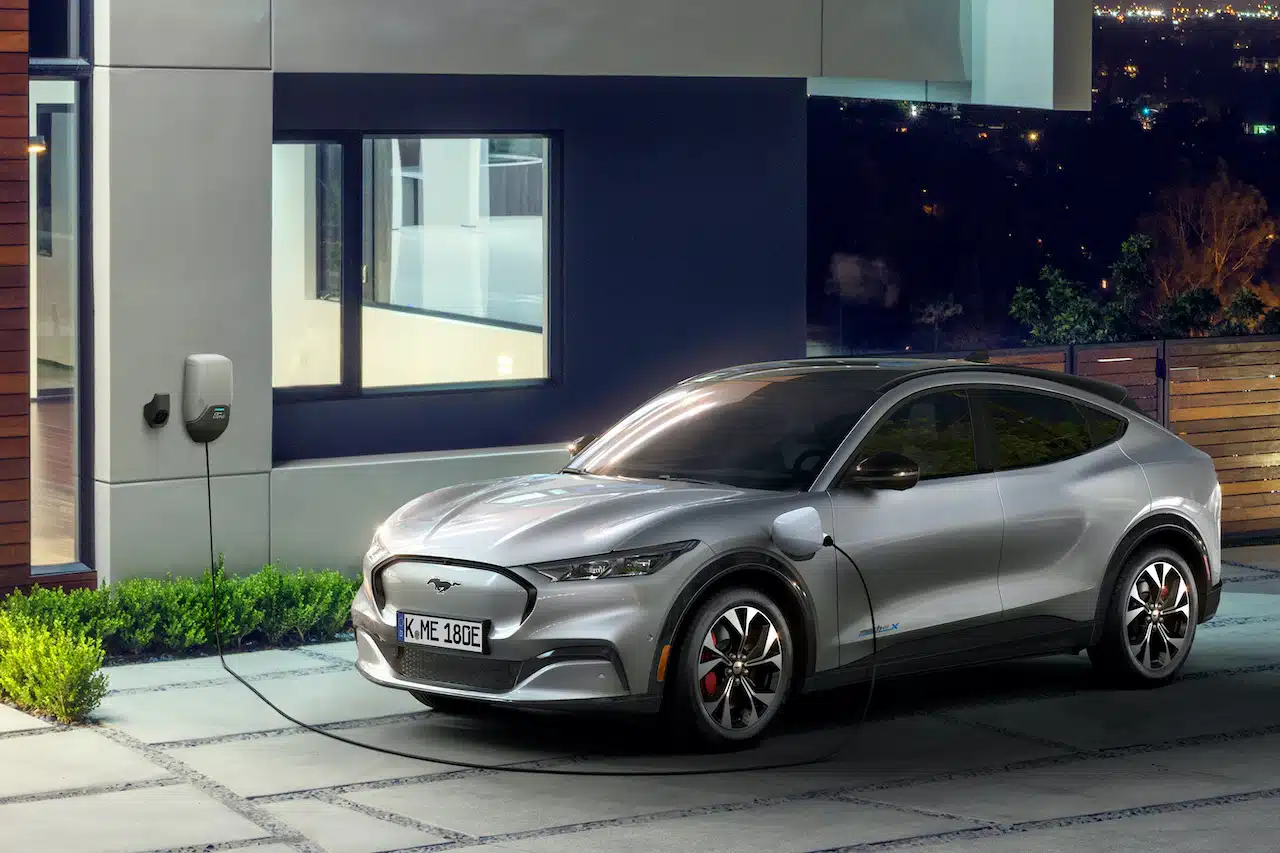Ford also equips Mustang Mach-E with LFP cells
Ford plans to introduce a version of the all-electric Mustang Mach-E with batteries powered by LFP cells in Europe later this year.
Both Ford commercial vehicles and next-generation Ford passenger cars can also be powered by LFP batteries, according to a recent announcement from the manufacturer.
LFP stands for lithium iron phosphate. LFP batteries are very durable, tolerate more charging and discharging processes due to their high cycle stability and also charge faster than, for example, batteries made of nickel-cobalt-manganese (NCM). They are also cheaper to produce than NCM batteries because of the materials used. The cost advantages of LFP batteries could help Ford keep the sales prices of its electric vehicles stable or even lower them.
In return, however, the energy density of lithium iron phosphate batteries is fundamentally lower than that of NCM batteries for the same dimensions - and thus also the achievable vehicle range. Another advantage of NCM batteries compared to LFP batteries is their better tolerance of very low temperatures. However, the cold tolerance of LFP batteries can be significantly improved by technical measures.
Ford customers will have a choice of battery types in the future
The introduction of LFP batteries - as an alternative to NCM batteries - will allow Ford customers to choose their electric car in the future with exactly the battery performance characteristics that match their individual mobility needs. In addition, LFP battery technology helps reduce dependence on raw materials such as nickel and cobalt. This is in line with Ford's commitment to sustainability and respect for human rights in its supply chains, he said.
In this context, Ford has announced that it will invest US$3.5 billion to build the first LFP battery plant in the US. The new production facility, called BlueOval Battery Park, is scheduled to open in Marshall, Michigan/USA in 2026.
The use of LFP batteries - in addition to batteries made of nickel-cobalt-manganese - should enable Ford to ramp up production more quickly. More electric cars can therefore be produced in the future, which will have a positive impact on delivery times, the manufacturer said.
"Our current range of electric cars, passenger cars and commercial vehicles alike, is meeting customer tastes and has generated strong demand. We are meeting our resulting delivery commitments while at the same time scaling LFP and NCM batteries. Tens of thousands and soon millions of customers will benefit from our electric cars with their advanced, high-performance batteries, which will also become more affordable over time." - Jim Farley, President and CEO, Ford Motor Company.
Ford Motor Company has announced plans to invest more than $50 billion globally in electric mobility by 2026. Ford aims to produce 600,000 electric cars per year globally by the end of 2023 as part of its Ford+ plan, increasing global annual production volume to two million e-cars by the end of 2026. By 2026, Ford is targeting an EBIT margin of eight per cent in relation to electric vehicles (Model e-business unit).
"We are committed to leading the electric car revolution. And that means investing in the technologies and jobs that will keep us at the forefront of this global transformation in our industry," said Bill Ford, Chairman of the Board of Ford Motor Company.
